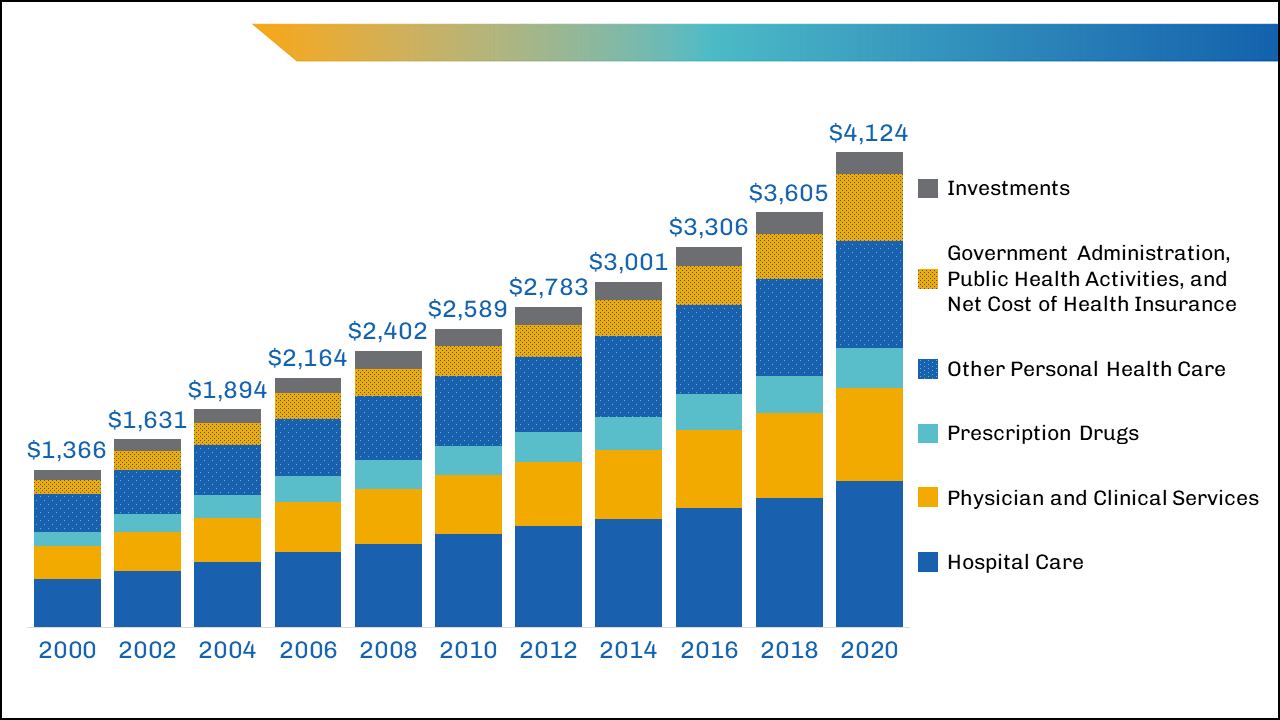Healthcare RCM: Enhance Revenue Cycle Monitoring for Better Results
A Comprehensive Overview on How Healthcare RCM Functions to Enhance Payment and Collections
Browsing the intricacies of health care income cycle monitoring (RCM) is important for providers aiming to improve their payment and collections processes. The overview unloads the complexities of RCM, from patient registration to accounts receivable management, offering understandings right into maximizing each action. Integrating sophisticated technology and standard procedures can substantially reduce insurance claim denials and increase repayment cycles. Yet, the real difficulty exists in perfectly merging these aspects to improve cash flow. As we discover the core parts and techniques that drive effectiveness, one question stays: how can medical care entities ideal setting themselves to prosper financially in an ever-evolving market?
Understanding Revenue Cycle Administration
Realizing the ins and outs of Income Cycle Administration (RCM) is important for health care organizations intending to optimize their economic efficiency. RCM is an important management feature that encompasses the entire financial process of person care, from the preliminary visit readying to the last settlement of the equilibrium. It is a complicated procedure created to determine, accumulate, and handle the profits from the solutions supplied to patients. Efficient RCM makes sure that doctor receive precise and prompt settlements, decreasing the risk of earnings loss and boosting capital.
The RCM procedure begins when a person schedules a consultation and prolongs through the patient's treatment journey, including payment and collections. An essential purpose is to reduce the time in between receiving and offering a service payment, thus improving the company's economic health. RCM includes different functions such as patient registration, insurance coverage verification, cost capture, coding, claims submission, settlement uploading, and handling appeals and rejections.
Secret Elements of RCM
In the world of Income Cycle Management (RCM), comprehending its crucial elements is fundamental to achieving financial efficiency within healthcare companies. RCM is a detailed process that incorporates various phases, each crucial to making sure reliable invoicing and collections. The main parts consist of individual registration, insurance verification, cost capture, coding, case submission, payment uploading, and accounts receivable administration.


As soon as coded, cases are submitted to payers, where precision is extremely important to stay clear of beings rejected or delays - Healthcare RCM. Payment publishing entails tape-recording the gotten settlements, which allows for the settlement of accounts. Finally, balance dues monitoring focuses on monitoring and dealing with unsettled claims, making certain prompt follow-up and resolution
Each part of RCM is adjoined, and inefficiencies in any type of part can interrupt the whole cycle. For that reason, understanding these aspects is necessary for medical care service providers to enhance revenue and improve their monetary health and wellness.
Methods for Efficient Invoicing

Standardizing payment treatments throughout the company is one more crucial method. Developing clear standards for documents, coding, and entry helps keep consistency and compliance with governing demands. Training staff routinely on these procedures guarantees every person is current with the newest modifications in payment codes and payer policies.
Precise fee capture is important in preventing income leakage. Carrying out regular audits and monitoring systems permits the recognition and adjustment of inconsistencies before they influence earnings. Furthermore, preserving open lines of interaction with payers aids to quickly resolve any type of disagreements or misconceptions that may occur.

Last but not least, engaging people early in the payment procedure you can try here by offering clear quotes and academic materials about their financial duties can dramatically lower confusion and boost settlement timeliness. These methods jointly contribute to a much more effective and financially healthy and balanced invoicing system.
Enhancing Collections Processes
Given the intricacies of clinical payment and the selection of payer requirements, boosting the collections procedure includes executing strategic measures that make certain precise and prompt settlement of services rendered. Automation tools can aid in tracking insurance claim statuses, sending prompt tips to patients, and handling rejections much more successfully.
Clear and transparent person communications are important. Offering thorough descriptions of fees and supplying adaptable repayment strategies can increase person fulfillment and prompt payments.
Routine audits of the collections procedure must be performed to determine locations for improvement and make certain conformity with laws. By evaluating information, medical care companies you could try this out can recognize patterns, anticipate possible concerns, and adapt approaches appropriately (Healthcare RCM). Eventually, a well-enhanced collections process not just sustains monetary health and wellness yet likewise adds to a much more seamless experience for patients and team alike
Optimizing Earnings Streams
Structure upon the structure of a strong collections procedure, health care companies can additionally bolster their economic stability by purposefully enhancing earnings streams. This involves a multi-faceted approach, beginning with a detailed analysis of existing revenue sources to recognize inefficiencies and areas for development. Using innovative information analytics tools enables organizations to get insights into payer mix, patient demographics, and solution application patterns, permitting data-driven decisions that improve income capture.
Implementing automated billing systems can significantly minimize errors and speed up cases processing, making sure that revenue is accumulated a lot more efficiently. Additionally, optimizing payer agreements via normal arrangements can boost repayment prices and terms, straight impacting the lower line. Diversifying solution offerings, such as including telehealth or health care, can additionally bring in a broader person base, hence enhancing profits capacity.
Another important element is boosting patient interaction and fulfillment, as completely satisfied individuals are most likely to stick to treatment plans and make timely repayments. Supplying versatile repayment alternatives and clear invoicing practices can boost collections and foster client loyalty. Healthcare RCM. By embracing these approaches, medical care companies can develop an extra durable monetary framework, making sure sustained development and stability in an ever-changing market landscape
Verdict
In final thought, medical care Earnings Cycle Management (RCM) plays an important duty in enhancing billing and collections processes by integrating key parts such as client enrollment, insurance policy confirmation, cost capture, coding, declares submission, and accounts receivable administration. By using innovative technology, systematizing procedures, and promoting client involvement, medical care carriers can considerably lower insurance claim rejections, speed up repayment cycles, and improve cash money flow. This comprehensive approach to RCM eventually results in boosted financial performance and sustainability for healthcare organizations.
The RCM process starts when an visit individual routines an appointment and extends with the individual's treatment journey, consisting of invoicing and collections.Another critical element is enhancing person engagement and contentment, as completely satisfied individuals are more likely to stick to treatment plans and make timely repayments. Offering flexible settlement options and transparent payment techniques can boost collections and foster person commitment.In conclusion, medical care Revenue Cycle Monitoring (RCM) plays a crucial role in optimizing invoicing and collections processes by incorporating crucial elements such as client enrollment, insurance coverage verification, fee capture, coding, claims entry, and accounts receivable monitoring. By utilizing sophisticated technology, standardizing treatments, and cultivating client involvement, health care providers can significantly lower claim denials, increase settlement cycles, and enhance money flow.